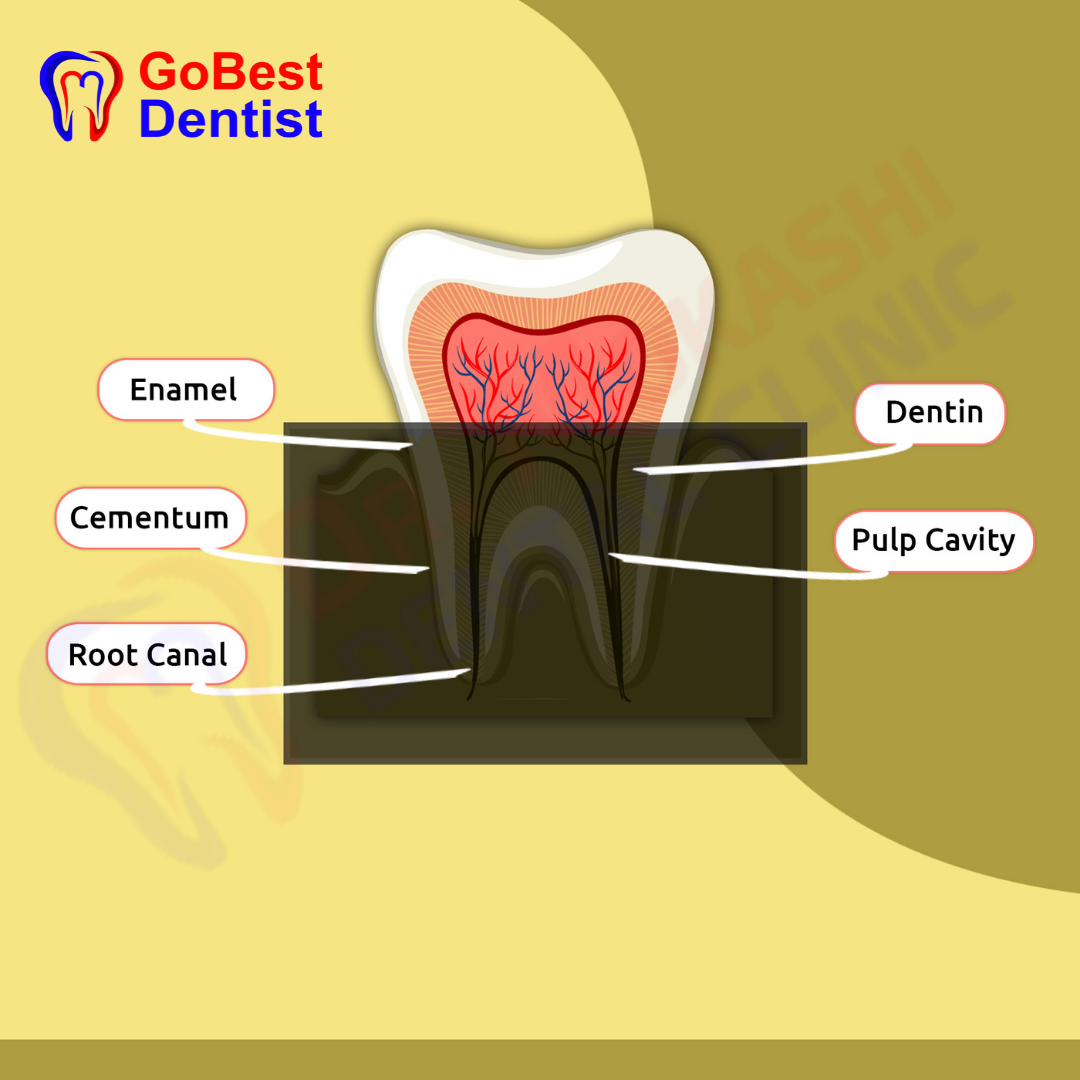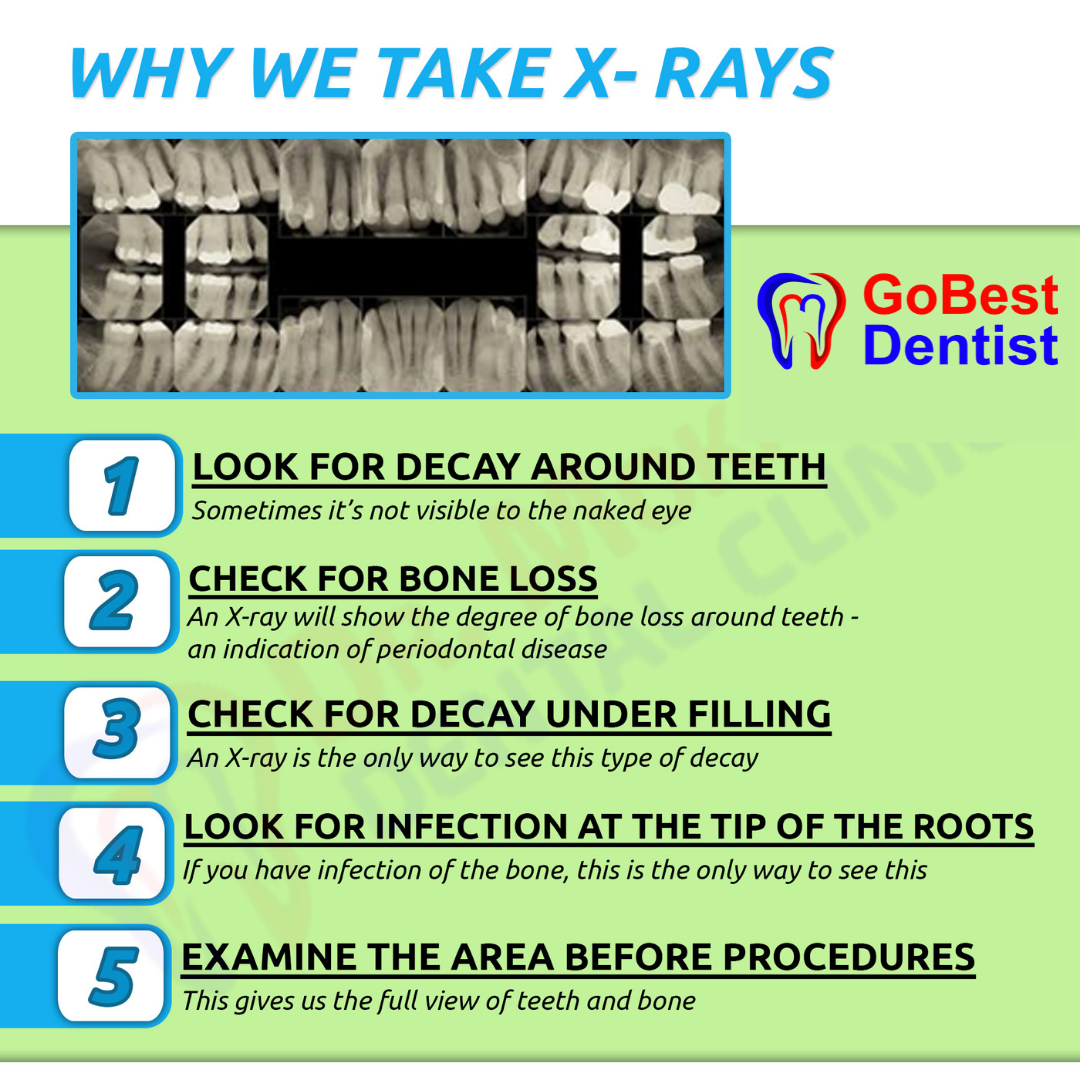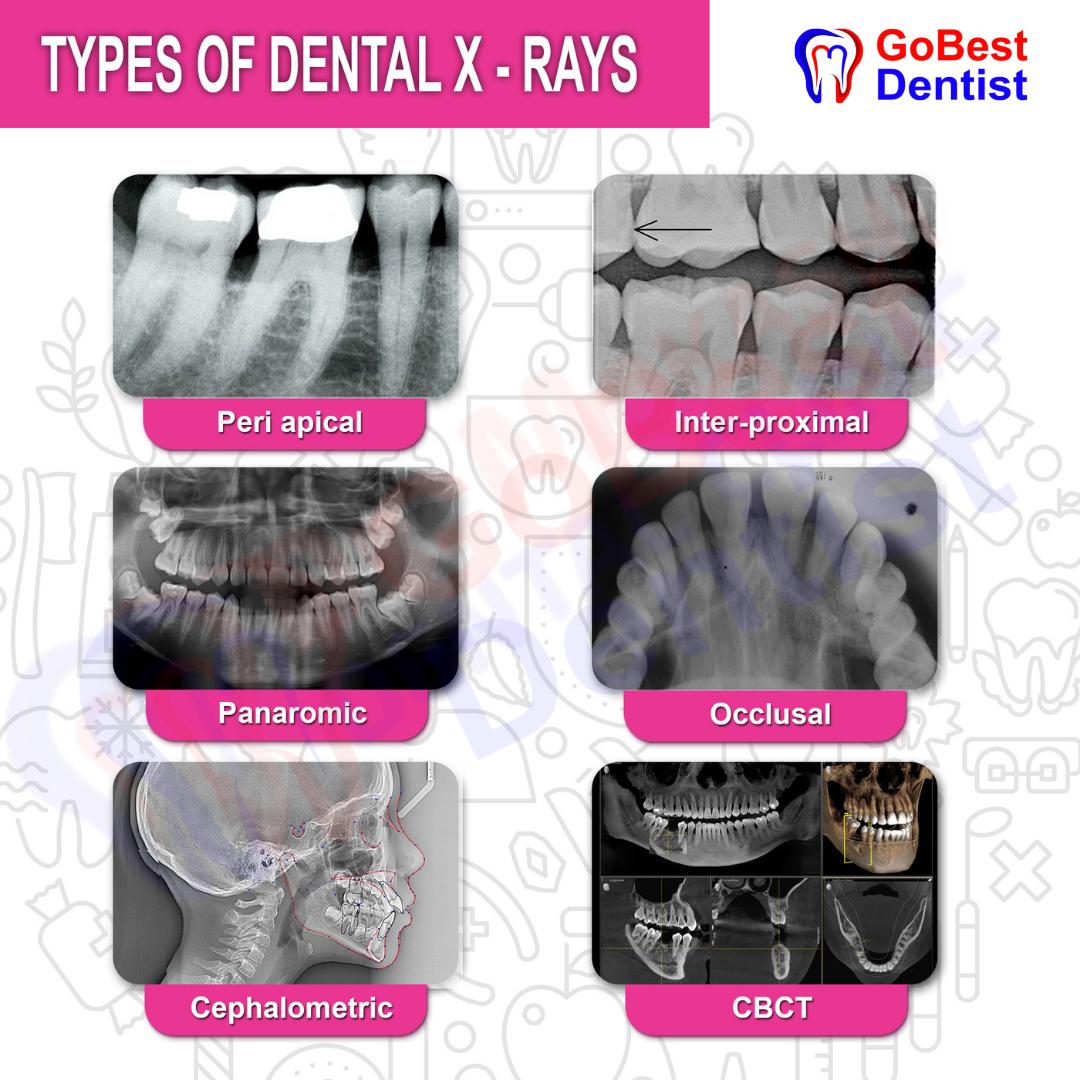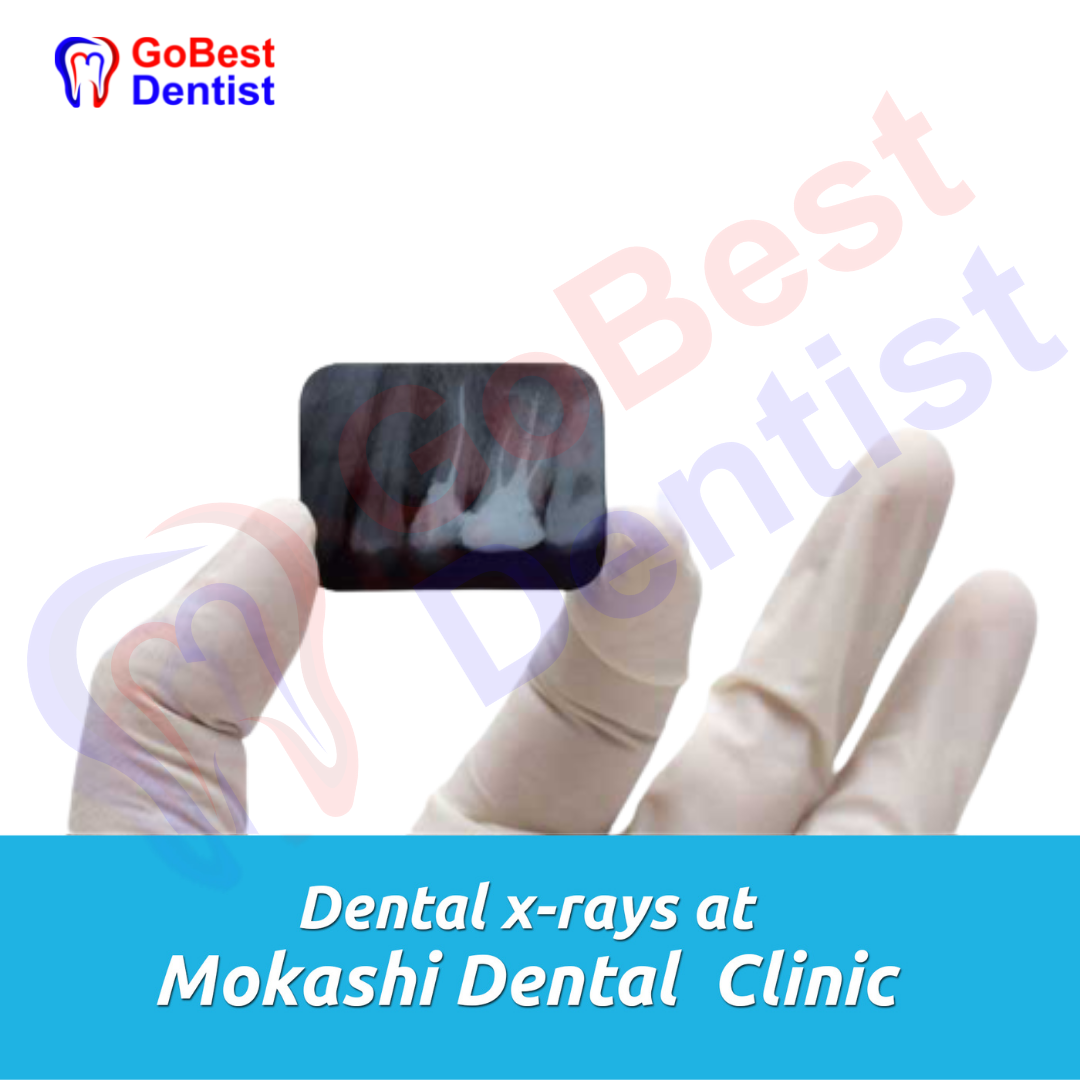DENTAL X-RAYS
‘Dental x-rays are not as complex as they seem to be!’

WHAT
What are Dental x-rays?
Dental x-rays are images taken by the dentist to examine the structures of your teeth and surrounding hard tissues which cannot be seen by naked eyes. Very low level of radiation is used to capture these images.
Looking for dental x-ray treatment in Pune?
CALL US NOW
WHY
Why are Dental x-rays needed?
If you are a new patient, we will need an x-ray to get a clear picture of your oral health.
Sometimes you might need yearly x-rays to track the progress your dental disease or treatment like orthodontic treatment.
Dental X-rays play an important role as they make the entire picture clear. Structures beyond gums like roots and bone composition cannot be seen with naked eyes. X-rays helps us identify problems in them before they reach to an advanced stage and cause more destruction.
Read moreWHAT
What problems can a dental x-ray detect?
- Small decay not visible to naked eyes especially those between the teeth.
- Decay between dental fillings.
- Level of bone between teeth.
- Changes in bone due to a dental infection.
- Detect developmental anomalies like cysts and tumors.
- Reveal impacted wisdom teeth
- To determine proper development of teeth in children
Looking for dental x-ray treatment in pimprichinchwad?
CALL US NOWTYPES
What are the types of dental x-rays?
There are two main types of dental x-rays:
1. Intra-oral x-rays
These are the types of x-rays recorded by placing the film inside the mouth. These are the most common types of x-rays used in a dental clinic. They can detect many problems from decay to dental development to health of your jawbone. They are used at various stages of root canal treatment to determine the progress.
2. Extra-oral x-rays
These are the types of x-rays recorded by placing the film outside the mouth. The main areas of focus for an extra oral x-ray is the entire jaw and skull and not individual teeth. Therefore they cannot be used to detect small cavities but detect lesions in jaw bones and proper functioning of the joint (Temporomandibular Joint).
These X-rays are further divided into various types.
Types of Intra-oral x-rays:
1. Bite-wing x-rays
This technique involves biting on a special piece of paper.These type of x-rays are used to see the details of upper and lower jaw in a single image. They show the part of tooth till the level of supporting bone (i.e the crown portion of tooth)
These types of x-rays are most commonly used to detect decay in between the teeth. They are often indicated to check the fitting of dental crowns as well as marginal integrity of dental fillings.
2. Peri-apical x-rays
These types of x-rays show the entire tooth from crown to root. It is the two dimensional image of the whole tooth in focus. One single image can contain 3-4 teeth depending on the size of teeth and area of focus.
They are most commonly used to detect abnormalities related to tooth root and surrounding bone.
3. Occlusal x-rays
These types of x-rays can show all the teeth of either upper arch or lower arch in one single shot.
They are used to detect the alignment of teeth and the anomalies associated with the floor of the mouth or the palate.
Types of Extra-oral x-rays.
1. Panoramic x-rays
It is a type of an extra oral x-ray that can capture the entire mouth in one single image.
It is used to plan procedures of surgical extractions or braces. It is also used to detect bone abnormalities, fractures and tumors.
2. Computed Tomography
It is a three dimensional image of all internal structures of your head, face and neck.
They are most commonly used in planning for placing dental implants to know the density of bone in the respective area.
It is also used to determine the position of sinus and vital nerves before any major surgical procedure.
3. Cephalometric x-rays
These type of x-rays are taken from outside the mouth. They reveal the side view of your head showing teeth, jaw and surrounding structures.
They are most commonly used for diagnosis and treatment planning in orthodontics. They can also be used to study temporomandibular disorders and various types of injuries.


HOW
How are Dental x-rays at GoBest Dentist safe?
- We use very small amount of radiation while taking x-rays.
- We use digital x-rays which reduces the amount of radiation 80% then the conventional x-rays.
- We follow ALARA principle which stands for as low a reasonably achievable while taking x-rays.
- We use the fastest image receptors.
- We use proper techniques for exposure to minimalize radiation.
- We use leaded apron whenever possible.
Frequently Asked Questions
Preventive oral care is mandatory during pregnancy in order to avoid pregnancy gingivitis and other such complications.



